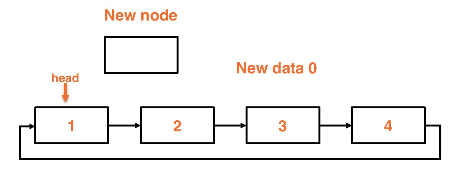circularly linked lists
These are linkedlists where the head and tail nodes connect to each other rather than to null references.
What is a circularlylinked list
- Type of a linkedlist where the front and back are connected
- Usually this doesn't include a tail pointer
- This doesn't change our add/remove efficiency
- Termination condition for logic changes due to no "end" to the list
- We can no longer iterate until we're null because this is linked
- To mitigate this we can utilize a size variable
- Additionally, we can use the
current.nextto point to the head as a termination condition
- These can be singly or doubly linked lists
Adding to a circularlylinked list
- Adding to the front we access the back of the list, which we don't have without a tail pointer
- Adding to the back requires that we work through a similar workflow as adding to the front
Example of adding to the front:

- We change the head reference to the new node, then have to iterate the list in O(n) to reach our last node
- Once at the last node we change the tail reference to point to the new node
Efficient adding to the front
- Create a new empty node
- Add the new node at index 1
- Move the data from the head to the new node
- Add the new data into the head node
- This ensures that the next reference to the new node is maintained without having to change the pointers
Add the node to the list at index 1 to be copied:

Adding to the back
- Create a new empty node
- Add the new node at index 1
- Copy data from the head node to the new node
- Insert new data at the tail node
- Change the reference for the head to the "new node"
Create a node and insert at index 1:

Shift the data to the new node and change the head reference:

Removing from the front
- Removing from the front is trickier than just moving the head
- This is an O(1)
- Edge case: If the list is size 1 we have to avoid continually referencing ourself
- Move the data from
head.nextinto the head - Remove the second node from the list
- Redirect the head's reference to the 3rd in the list, skipping node 2
Skip the 2nd node and allow it to be garbage collected:

Removing from the back
- No special O(1) technique, this is O(n)
- Must use a loop to stop one sort of the last node
- We have to have access to the node itself to remove it, the only way to reach the node is through traversal
Removing from the middle
- Removing from the middle is the same as a singlylinked list
- We have to traverse in O(n)
- Work through the list and then change the pointer reference once we find the node we want to delete
Example linkedlists
- Singlylinked list:
- Web browser sesarch history (back button)
- Doublylinked list:
- Most recently used cache, music app that keeps song history
- Circularlylinked list:
- Music playlist that starts over once it completes



